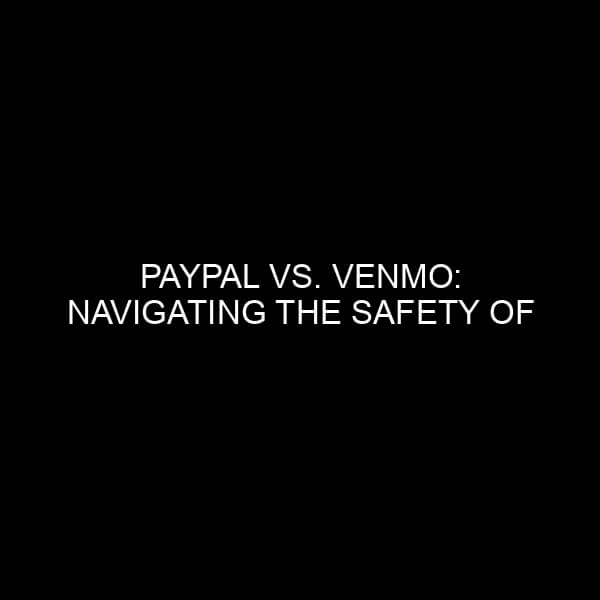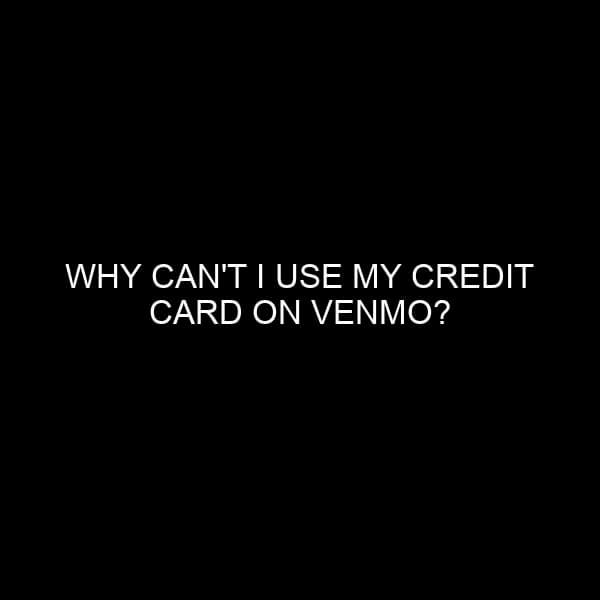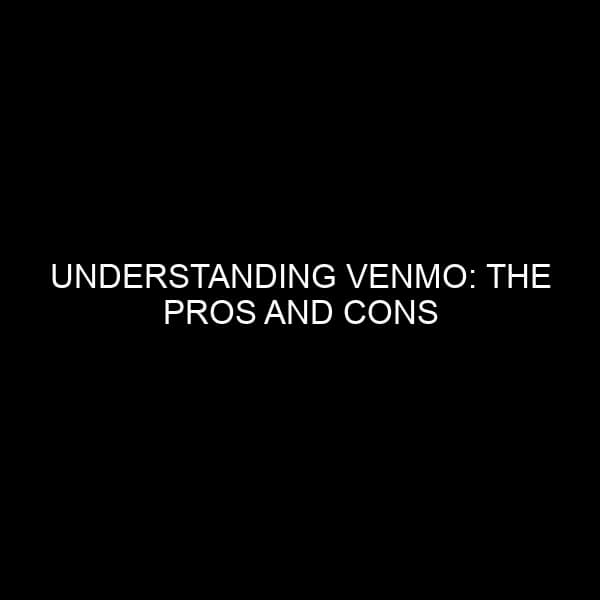PayPal vs. Venmo: Navigating the Safety of Digital Transactions
In today’s digital age, the way we transact money has radically transformed. No longer do we rely solely on traditional banking mechanisms to move money; now, with just a few taps on our smartphones or clicks on our computers, we can instantly send or receive funds. Leading this digital financial revolution are two giants: PayPal and Venmo. But with the convenience of these platforms, concerns about their safety have naturally arisen. As someone who has witnessed the dynamics of the financial market and the banking industry evolve, I find it critical to help consumers navigate the security features of both platforms.
A Historical Perspective: The Evolution of PayPal and Venmo
Before diving deep into their safety measures, let’s briefly touch upon their origins. PayPal was founded in December 1998 by Max Levchin, Peter Thiel, Luke Nosek, and Ken Howery. It rapidly gained popularity, becoming a preferred method of online payments, especially on platforms like eBay. As of my last update in September 2021, PayPal has extended its services across the globe, providing various financial solutions beyond just online payments.
On the other hand, Venmo, founded in 2009 by Andrew Kortina and Iqram Magdon-Ismail, started as a simple SMS-based payment system. It quickly shifted to a mobile app-based platform due to the proliferation of smartphones. Venmo’s primary appeal lay in its social feed, where users could share (or keep private) their transaction details with emojis and messages. In 2013, Venmo was acquired by Braintree and subsequently became a part of PayPal’s portfolio when PayPal acquired Braintree.
Now, understanding the relationship between PayPal and Venmo is crucial. Venmo, as a subsidiary of PayPal, benefits from the robust security infrastructure of its parent company. However, their operational mechanisms and user interfaces differ significantly, leading to different safety concerns and measures for each.
Security Protocols: PayPal’s Fort Knox
PayPal’s reputation as a global leader in online payments stems from its commitment to security. Here are some key safety features:
- Data Encryption: PayPal uses end-to-end encryption to ensure that transaction details remain confidential. By using advanced encryption techniques, it ensures that data transmitted between the user and the platform remains unintelligible to potential eavesdroppers.
- Fraud Monitoring: The platform continuously monitors transactions for suspicious activities. If anything unusual is detected, PayPal can put a hold on the transaction and notify the user.
- Two-Factor Authentication (2FA): For added security, users can activate 2FA, which requires a secondary confirmation of identity beyond just a password.
- Purchase Protection: This feature safeguards buyers if they don’t receive the item they purchased or if the item is significantly different from its description. Sellers, too, have protection against chargebacks, unauthorized transactions, and more.
Safety in Social Transactions: Venmo’s Measures
While Venmo leverages PayPal’s backend security infrastructure, its social nature and user demographics bring a unique set of challenges:
- Transaction Privacy: By default, Venmo transactions (not the amount, but the fact that a transaction took place) are public. Users are advised to review their privacy settings and ensure that they are comfortable with the level of information being shared.
- Bank-Level Encryption: Like PayPal, Venmo uses encryption to protect user account information. However, it’s essential to always use Venmo on a secure and private internet connection.
- Account Audits: Venmo’s team conducts regular account audits to check for suspicious activities. If found, they might temporarily freeze the account for security purposes.
- Authorized Merchant Payments: Venmo is designed primarily for payments between known parties. While there’s a growing list of authorized merchants accepting Venmo, users should be wary of sending money to unfamiliar individuals or entities.
Which Is Safer: PayPal or Venmo?
Given the insights above, it’s evident that both platforms prioritize user safety, albeit in different ways.
- Nature of Transactions: If you’re making online purchases, especially international ones, PayPal’s Purchase Protection offers a more comprehensive safety net. For casual transactions between friends or acquaintances, Venmo’s simplicity and social integration might be more appealing, but always remember to review the privacy settings.
- User Vigilance: Regardless of the platform, user vigilance remains critical. Always use strong, unique passwords and enable 2FA if available. Regularly review transaction histories and immediately report any discrepancies.
- Target Audience and Intent: Venmo is more casual and social, appealing to younger demographics engaging in small, peer-to-peer transactions. PayPal, with its broader suite of financial services and more extensive merchant network, caters to a diverse user base.
In conclusion, both PayPal and Venmo offer robust security features tailored to their intended uses. The “safety” of each largely depends on individual preferences, the nature of transactions, and user practices. As digital financial solutions continue to evolve, staying informed and practicing safe online behaviors will always be the best defense against potential threats.






